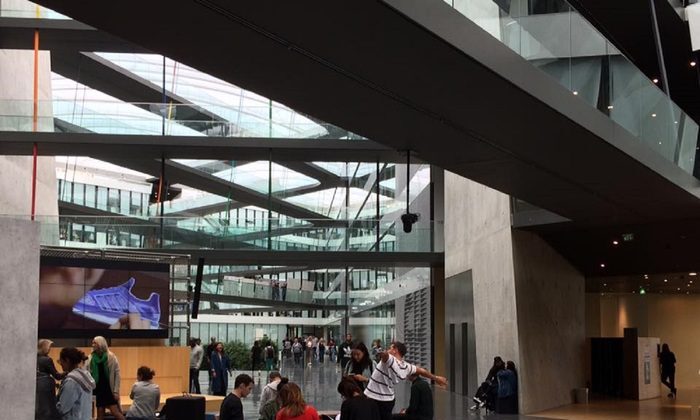Headquartered in Herzogenaurach, Germany, Adidas is a multinational corporation that designs and manufactures shoes, clothing, and accessories. It is the largest sportswear manufacturer in Europe and the second largest in the world after Nike. The company’s brand logo, commonly known as the three stripes, is likewise recognizable worldwide.

The three stripes of Adidas
Adidas climbed to fame with its high-performance sports shoes, but has now become equally regarded as a company at the forefront of style and innovation. The company took analysts by surprise in 2017 as its Superstar sneaker overtook Nike’s Jordan brand in the US, Nike’s home market.
NPD Group vice president and senior industry advisor Matt Powell stated that Adidas overtaking Nike in this brand battle was “an achievement I never thought I would see in my lifetime.” After all, the Nike Jordan brand had been an entrenched leader in the segment for over a decade.
Adidas’ US market share for sneakers quickly grew to 11.3% as of May 2017, almost double from the previous year, according to NPD Group.
What was the secret behind this spectacular comeback?
Creating the New
After buying out Reebok in 2006, Adidas found itself with stretched resources and a fading brand starved for innovation. The company knew a change was needed. Adidas set out to recreate the organization’s corporate culture in order to embrace new ideas. The goal wasn’t to keep pace with the industry, but to become an innovation leader.
It is inevitable that resistance will come with change on any level, but this is especially true with great change. In an attempt to have people commit and accept transformations in company culture, executives at Adidas observed how its employees worked, learned, and shared. With this, the organization gained valuable insights which led to effective changes.
Boundaries in physical space were brought down by designating open workspaces and encouraging staff to choose desks freely. By freeing up work styles, interpersonal and interdivisional boundaries were dissolved, which led to a flattened hierarchy and ultimately more efficient and effective communication companywide.
Moreover, The Learning Campus was set up in 2014 to improve internal learning and sharing. According to Christian Kuhna, who at that time was part of the Learning Campus team, “only 10% of what we learn happens through formal training, 20% we learn through other people, and 70% on the job.”
In other words, since learning is embedded in daily work, it proved very effective when peers were invited to teach and learn, and formal workshops were administered by professionals. Free experimentation was also encouraged and even failed attempts were shared and celebrated in order to mark the passage of the creative/iterative process.
The key internal KPI for this new strategy was the employee engagement and motivation index (non-financial), while the employer ranking constituted the external KPI. For performance management, motivational-inspirational factors were supplemented by the “score,” a simple and transparent method combining target setting, employee development, and appraisals. Individual targets were aligned with team goals to promote buy-in and encourage collaboration.
The Numbers
Adidas’ “Create the New” strategy was successful financially as well. Against the previous year, currency neutral sales increased 18%, and operating profits improved from 6.5% to 7.7%. Tightened controls brought about a decrease of 0.3% in operating working capital and a decrease of 12% in gross borrowings. Markets welcomed changes with a 67% increase in share prices.

The Superstar sneaker stands out as a symbol of this process. As customers were keenly observed in their natural habitat, a “retro” trend was tapped; a look and feel was created that won hearts and loosened purse strings. In addition, Adidas leaped outside of their comfort zone to embrace non-athlete representatives and social influencers. These people “resonated well with current consumer trends,” according to Baird analyst Jonathan Komp, thus changing the game of the sports apparel market completely.
A Visit to Adidas HQ
I visited the Adidas headquarters in Herzogenaurach recently and was fortunate to get an inside glimpse into a day in the life of employees at the company.
Public spaces included groups of staff and management of all office functions. They gathered around whiteboards and tables, engaging in lively discussion. People were deeply absorbed in thought, working on assignments and moving from one workspace to the next, freely sharing ideas.

Inside the Herzogenaurach HQ
It was fascinating to see an accountant mastering the technique of sewing, a designer intern studying new fabrics, master designers engaged in their own projects and consulting with others simultaneously, and a digital marketer learning how to make shoes.
Innovation by design thinking was everywhere.
What Adidas did to change their corporate culture was no easy feat. Changing a corporate culture in any organization, large or small, is a complex and abrasive challenge with many hurdles.
The people-first strategy at Adidas identified critical needs, unconstrained experimentation, and future-looking solutions. If such a large multinational corporation can take the risk to change corporate culture – and succeed – small and medium-size companies would benefit from such changes, as well.



